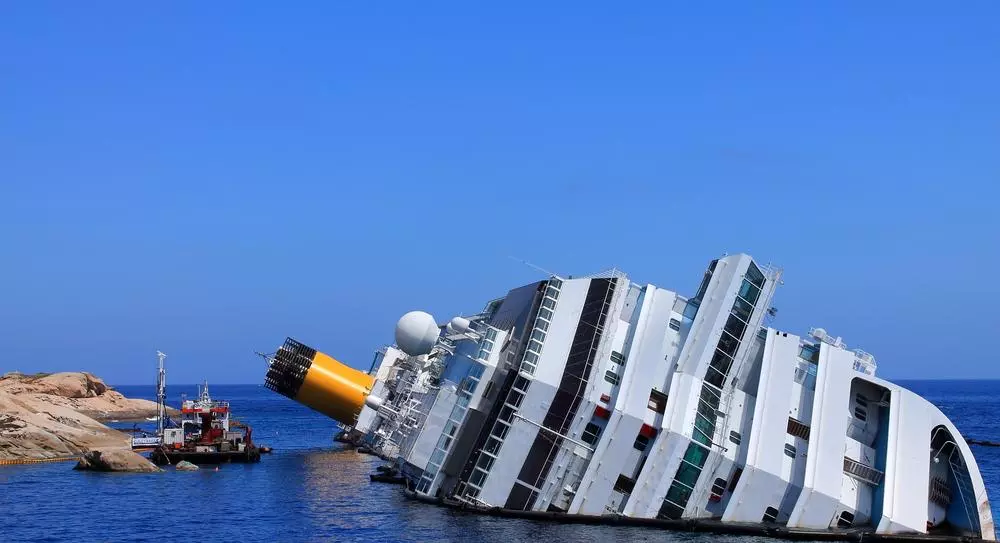
Shocking Waves: The Tragic Night the Costa Concordia Capsized with 200 People Aboard
On the night of January 13, 2012, the world was shocked by an unprecedented maritime disaster—the capsizing of the Costa Concordia, a luxurious cruise ship that had been carrying 4,229 passengers and crew across the Mediterranean Sea. This catastrophic event left 32 people dead and caused extensive damage, not only to the ship but also to the reputation of cruise travel, forever altering the way people would perceive large-scale ocean voyages.
The Ill-Fated Journey
The Costa Concordia, a 290-meter (951-foot) vessel, was a floating city of sorts, offering everything from high-end restaurants and theaters to swimming pools and spas. She set sail from Civitavecchia, Italy, on a week-long Mediterranean cruise. The ship’s planned itinerary included stops at some of the region’s most iconic destinations, such as Savona, Marseille, Barcelona, and the Tuscan island of Giglio, a picturesque locale known for its pristine beaches and quaint villages.
However, as the ship neared the small island of Giglio on the night of January 13, 2012, disaster struck. At approximately 9:45 PM local time, Captain Francesco Schettino steered the ship perilously close to the island’s coastline—a maneuver that would prove disastrous.
A Dangerous Deviation
What was supposed to be a celebratory and scenic pass near the island quickly turned into a nightmare. The Costa Concordia was too close to the shore, and as the ship made its sharp turn, it struck a rock formation just off the coast of Giglio. The collision ripped open the ship’s hull, flooding several of the lower decks and causing extensive damage to the ship’s infrastructure.
The impact was so severe that it caused the ship to list violently to one side, trapping passengers and crew inside, with some unable to escape the rising waters. A fire broke out in the ship’s engine room, further complicating the emergency response efforts.
The Harrowing Moments
As the ship began to tilt, chaos ensued. Passengers who had been enjoying dinner and entertainment were abruptly confronted with an unthinkable scenario. Panic spread throughout the vessel, with many people unaware of the severity of the situation at first. Crew members, some of whom were ill-trained for such an emergency, struggled to maintain order and communicate effectively.
At the same time, Captain Schettino’s actions were highly criticized. Instead of remaining aboard and coordinating the evacuation, he abandoned the ship early, leaving the passengers and crew behind. The captain’s decision to evacuate the vessel before all passengers were safely offboard led to widespread outrage and was later deemed one of the most egregious acts of negligence in maritime history.
In the midst of this confusion, lifeboats were lowered in disarray. Many passengers were forced to jump into the cold, dark sea, some without life jackets. Rescue operations were launched by the Italian coast guard, but it would take hours before many were saved. The treacherous waters and rocky coastline delayed the rescue efforts, making the situation even more dire for those stranded aboard the sinking ship.
The Aftermath
By the time the Costa Concordia finally capsized, the damage was done. Thirty-two lives were lost in the disaster, including both passengers and crew. Many others were injured, some severely. As survivors made their way to the safety of Giglio, many were left to contemplate the scale of the tragedy they had just experienced. The emotional and physical toll on the survivors, many of whom were forced to abandon their possessions and memories, was profound.
The ship’s wreck was eventually stabilized and remained partially submerged off the coast of Giglio for months. The recovery operation, which involved carefully removing the ship from the rocks and ensuring the safety of those working on the wreck, was one of the largest maritime salvage operations in history.
The Legal and Financial Consequences
In the aftermath of the disaster, legal proceedings were swift and intense. Captain Schettino faced charges of manslaughter, abandoning ship, and causing the disaster. In 2015, he was sentenced to 16 years in prison for his role in the catastrophe, a sentence that reflected the gravity of his actions and the loss of life under his command.
The Costa Concordia disaster also had significant financial implications. Costa Crociere, the cruise line that operated the ship, faced numerous lawsuits, both from the victims’ families and from passengers who claimed the company was negligent in its handling of the emergency. The total financial cost to the company, including settlements, fines, and the salvage operation, ran into the billions of dollars.
The Legacy of the Costa Concordia Tragedy
The Costa Concordia disaster is a stark reminder of the dangers that can arise from human error, complacency, and a failure to act decisively in the face of an emergency. It led to significant changes in maritime safety regulations, particularly in the cruise industry. New protocols were introduced for evacuation procedures, and the training of crew members was overhauled to ensure that they were prepared to handle any emergency, no matter how dire.
The tragedy also raised awareness about the importance of leadership during times of crisis. Captain Schettino’s abandonment of ship and failure to act in the interest of his passengers underscored the critical role of leadership in ensuring safety at sea. Today, many cruise lines emphasize a culture of safety and responsibility, recognizing the lessons learned from the Costa Concordia disaster.
For the survivors and families of the victims, the night of January 13, 2012, will remain forever etched in their memories. It was a night when the thrill of a dream vacation turned into a nightmare, and when the fragility of human life was starkly exposed against the backdrop of the Mediterranean Sea. The Costa Concordia disaster was not just a maritime tragedy—it was a global wake-up call for the cruise industry and for those who rely on the vast expanse of the world’s oceans for travel and adventure.






